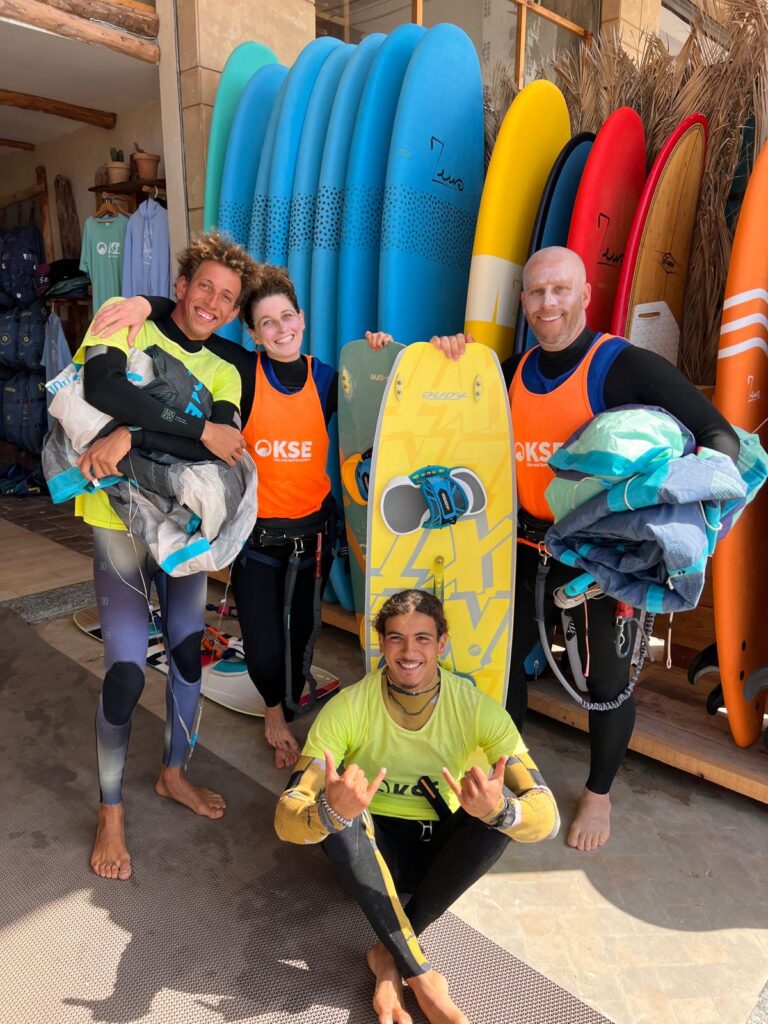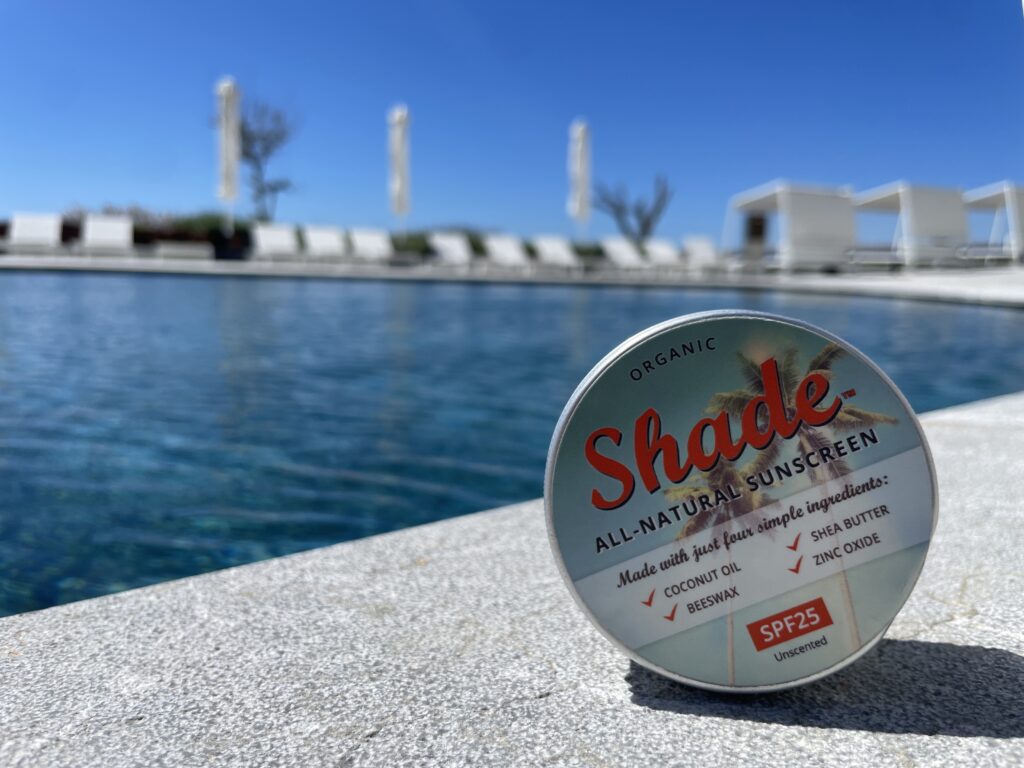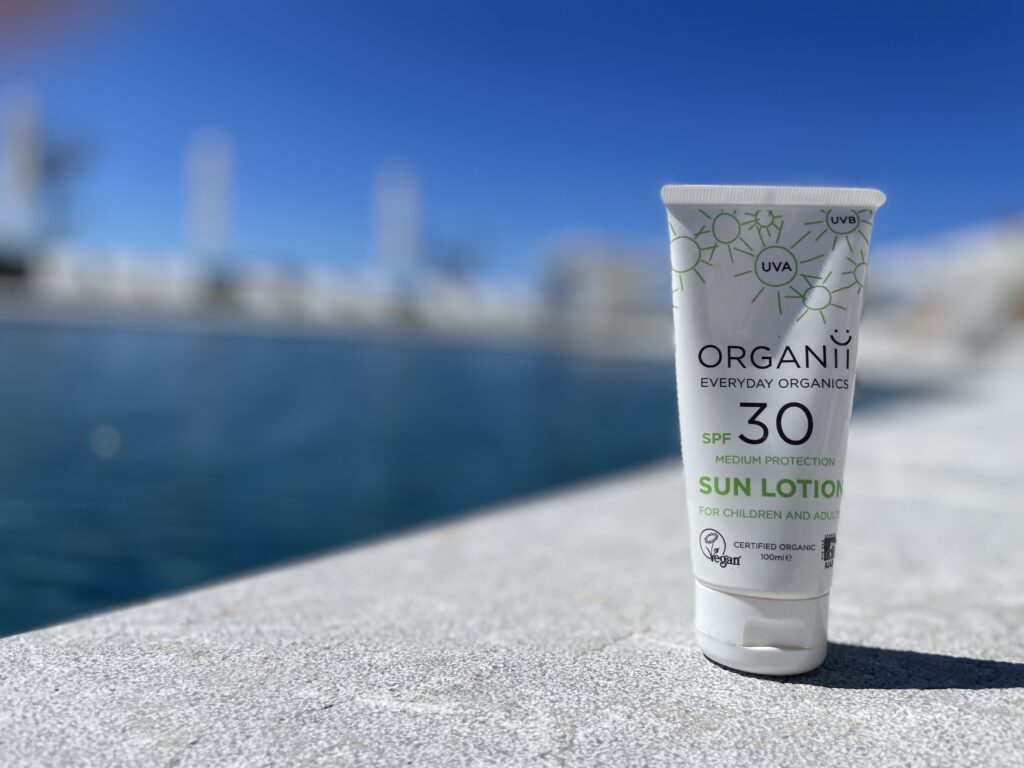Do natural and mineral suncreams really work? I set off for five weeks of kitesurfing in Morocco armed with only Shade All-Natural Sunscreen (Factor 25) and Organii Sun Milk (Factor 50) and Organii Sun Cream (Factor 30) to find out.
I know, I know. It’s a tough job. But, somebody had to do it. Kitesurfing is a great way to test how effective sunscreens are because you’re in the ocean for a couple of hours at a time. We were faced with constant wind and waves, which means the sunscreen was getting tested in pretty tough conditions on our faces. But, I also used them when going out, when walking 18-hole golf courses, in the desert and the one day(!) I sat by the pool reading.
The verdict? My face didn’t get burnt once. My legs, feet, arms and chest remained protected and sunburn-free. Only one shoulder got burnt, once, on the golf course. But, that’s largely because I ignored the warning signs that it was getting hot and I didn’t reapply or cover up.
Here’s what you need to know…

How the sunscreens work:
Both sunscreens are mineral sunscreens. This means they work by reflecting the sun away from the skin. It also means they should be less irritating for sensitive skin.
The trade-off is, you will have a white sheen after you’ve applied it. Generally, I felt that my face looked more white than my body and, honestly, at first, I didn’t love this. But, the only other option is a chemical sunscreen that absorbs into the skin (creating a chemical reaction in the body that then releases the rays as heat), so looking a little white is my preferred option.
Also, the more you tan the less weird it looks because it’s clear you’re wearing sunscreen and are not just weirdly pale. Plus, the white sheen means it’s easy to see where you’ve hit and where you missed – a bonus if you’re applying to fidgety children, which I was not (but I will be recommending these to family and friends with kids because who wants to slather their kid in chemicals?).
I used the sunscreens pretty interchangeably because I wanted to test them both on my skin when it was most prone to burning – in the early days of being in the sun.
At first, when I was in the salt water every day, my face felt dry, but I used a Organii aftersun on my body and a good natural oil from Lyonsleaf on my face in the evenings and this helped. As my body acclimatised, I only needed to do this from time-to-time.
Generally, I’m pretty keen on letting my body regulate itself where possible and giving it help only when it needs it.
So, that’s the similarities. Here’s the unique qualities of Shade and Organii:
Best natural and mineral suncreams by UK brands

Shade All-Natural Sunscreen
Shade ingredients: Shade is made up of only four ingredients: organic coconut oil, organic shea butter, beeswax and (non-nano) zinc-oxide. That’s it. It’s as natural as you can get.
What SPF is it? SPF25
What Shade is like: Shade is a balm that comes in a tin. This is because it doesn’t contain any water (read this article about the water-free beauty revolution). This means it’s great for travelling and there’s minimal risk of leakage.
How Shade feels: Shade glides on. The warmer the tin the easier the glide. Some people love Shade and use it as a year-round moisturiser, for others zinc-oxide can be drying so you may need a separate moisturiser.
Does Shade provide both UVA and UVB protection? Yes.
Is Shade water-resistance? Shade hasn’t been officially tested to be water-proof, but in my experience, after two hours of kitesurfing in the sea, the sunscreen was still very much on my face and only came off when I washed it off with face-wash in the shower/rubbed it with a towel after a cold shower at the surf club.
SHOP SHADE NOW

Organii Organic suncream
Organii ingredients: Organii has many more ingredients, but they are pretty much all extracts from fruits and plants. It also contains Titanium Dioxide, which reflects UV rays and is non-irritating, and Zinc Oxide which creates a physical barrier, protecting skin against damp and UV rays.
What Organii is like: Organii offer a range of products including suncream, sun milk and sun lotion. That’s partly why there are more ingredients – some are for their moisturising qualities others are preservatives to prevent bacterial growth (which you always need when you add water to a product to turn it from a balm to a cream or lotion).
What SPF is it? Ranges from SPF15 – SPF50
How Organii feels: All products feel creamy and smooth, rubbing easily into the skin.
Does Organii provide both UVA and UVB protection? Yes.
SHOP ORGANII NOW

What else you need to know about natural suncream
Choosing the right sunscreen is not only better for your health, it can also have a big impact on the environment, and ocean life, especially.
A mineral sunscreen works by reflecting UV rays away from the skin. They are made of natural ingredients that have been processed in a lab: zinc oxide (from the mineral zincite) and titanium dioxide (from minerals rutile or anatase, if natural). Both ingredients are very white because they’re reflecting the sun.
As it contains less chemicals, mineral sunscreen is also broadly considered to be less irritating for sensitive skin.
Is SPF 25 high enough?
Are you ready to have your mind blown?
The SPF (Sun Protection Factor) rates how good a sunscreen is at blocking UVB rays – the ones that most typically cause sunburn. A product with SPF 15 blocks a staggering 92% of UVB rays. SPF 20 blocks about 95% and SPF 50 blocks about 98%.
So, there’s a 6% difference between SPF 15 and SPF 50. And, yes, SPF 25 is probably high enough.
Not linked to the SPF rating, but also important to note:
UVA rays account for 95% of the radiation that reaches the earth’s surface. They have a longer wavelength that can pass through clouds and glass. It’s mainly linked to ageing but can also cause cancer. So, look for a sunscreen that protects you from both UVA and UVB rays.
How much time can you spend in the sun without burning?
There’s a calculation you can use as a guide for how much time is safe for your skin to spend in the sun: your skin’s own natural protection time (typically 5 – 30 minutes) x sun protection factor.
But, we don’t encourage you to play fast and loose with working out the limits of your skin’s own protection time because there are other variables – most notably the weather and atmospheric conditions.
Find our complete Sunscreen guide here: including the differences between mineral and chemical sun creams, what you need to know about nano particles and microplastics.


